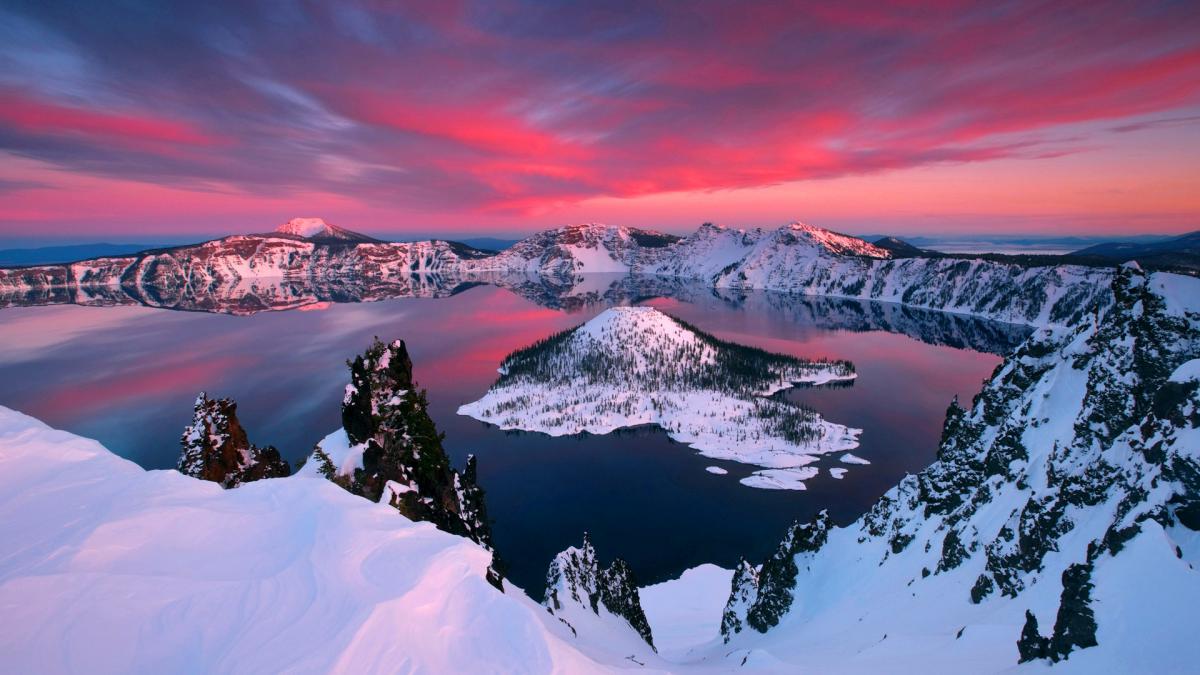
The combination of deep blue pure waters, as if dipped in the foothills of silent cliffs, and two beautiful islands in the middle of Crater lake, has been a genuine inspiration for people in the course of millennia. The lake’s present day tranquility could hardly ever infer the notion of its volcanic past.
Crater Lake partly occupies a large volcanic crater, situated in the south-central part of Oregon, US. The caldera was formed around 8 000 years ago when Mount Mazama volcano collapsed. The lake is not fed in or out by rivers. Yet, rain and snowfalls provide for evaporation. Crater lake is 1,943 feet (592 m) deep, which makes it the deepest lake in the US.
An interesting feature found in the lake is the “Old man of the lake”, which is a tree, yet what remained of it nowadays is just a stump. The low temperature of the lake water does not allow the wood to decompose, and it has been able to survive for over a century.
Wizard island and Phantom ship are respectively the larger and the smaller island in Crater lake. Wizard island came up from cinder cone eruption after the crater began to fill with water in order to become a lake. Phantom ship is famous for its lavish vegetation, including seven trees, wild flowers, lichens. The trees house colonies of violet green swallows.
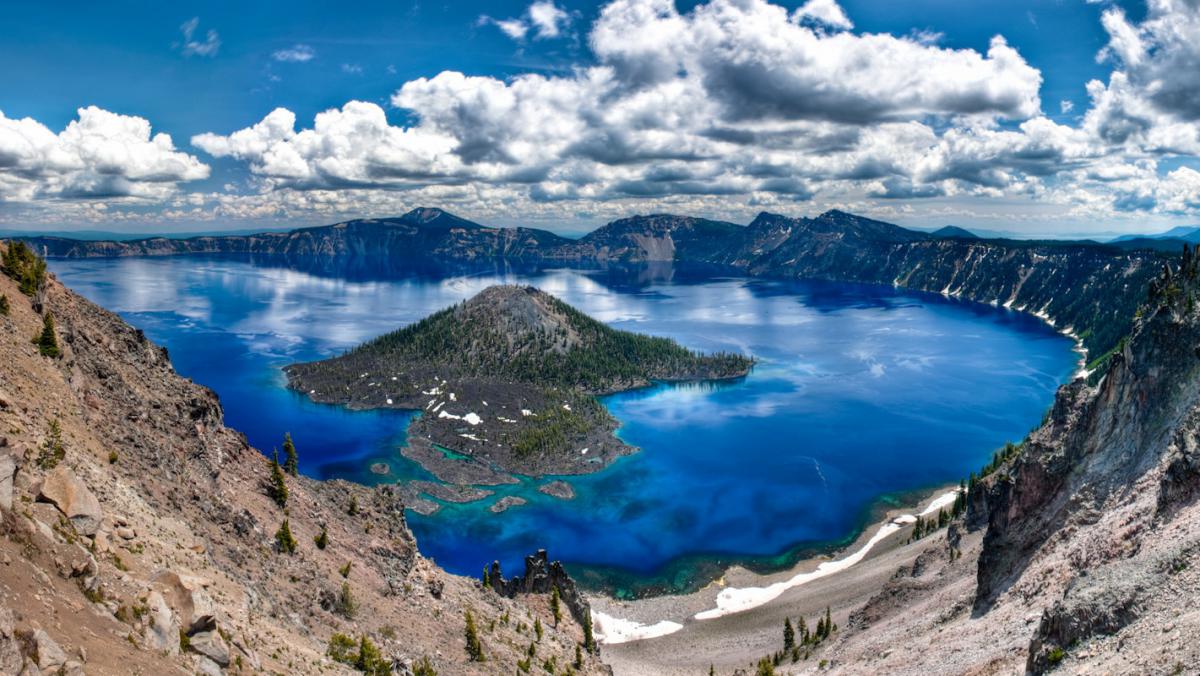
How deep is Crater lake?
The maximum depth of Crater lake is 1,949 feet (594 m). Its diameter is 5 by 6 miles (8.0 by 9.7 km). the average depth of the lake is measured at 1,148 feet (350 m). If the lake’s maximum depth is taken into account, it is found to be the deepest lake in the US, eight other lakes in the world are deeper(the deepest lake in the world is Lake Baikal). If the average depth is considered, Crater lake is the deepest one in the Western Hemisphere, since its basin is located entirely above sea level.
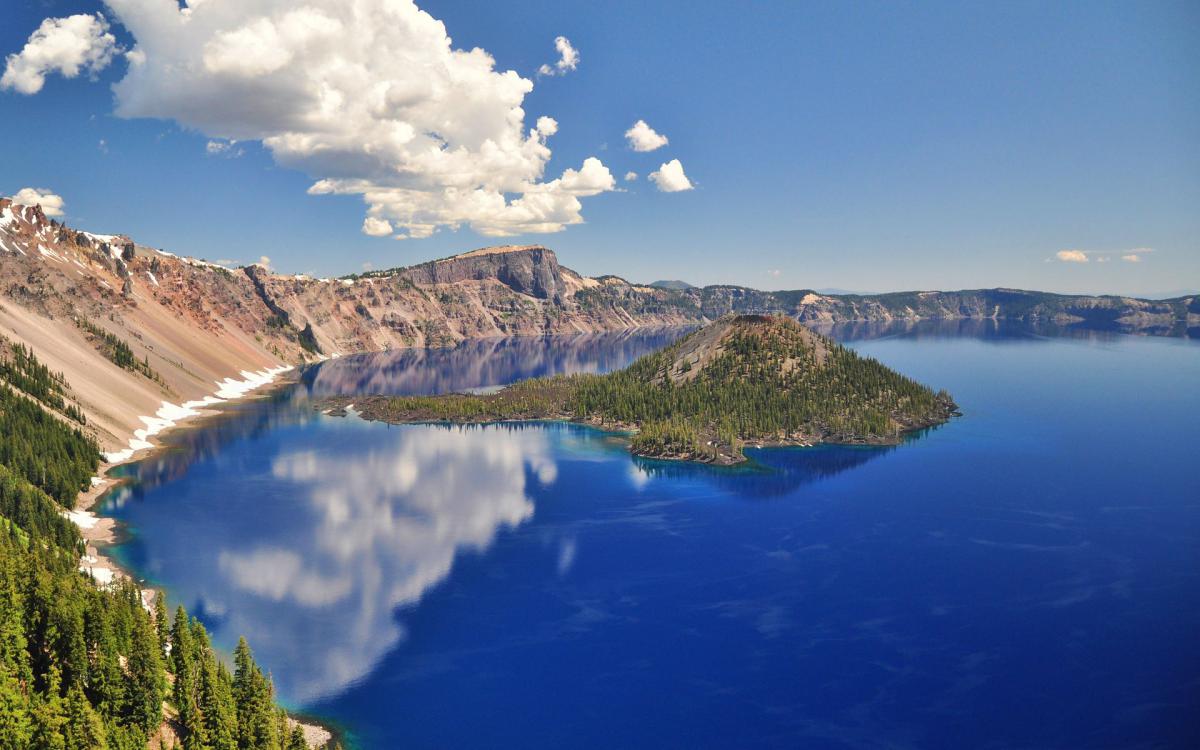
Geological development
Crater lake is a caldera, which was created by a volcano eruption approximately 8 000 years ago. As a result, Mount Mazama subsided and 50 cubic kilometers of rhyodacite was erupted. From that time on, Mount Mazama eruptions had been limited within the caldera.
Wizard island, the central lake platform, was formed by lava eruptions. The floor of the caldera was covered in sediments and landslide debris.
After the volcanic crater began to cool, rain and snow were allowed to pile up, and this water accumulation led to the formation of Crater lake. In the course of time, the caldera rim became more and more stable. There was an activity of fumaroles and hot springs; the mountain got some streams, which revived the radial drainage. Consequently, the barren vicinity was densely forested. Experts state that the current amount of water at 594 m (1,949 ft) depth, needed more than 700 years to fill the lake.
Since hydrothermal processes are still active on the lake bed, it is believed that Mazama hides eruption surprises that may eventually occur.
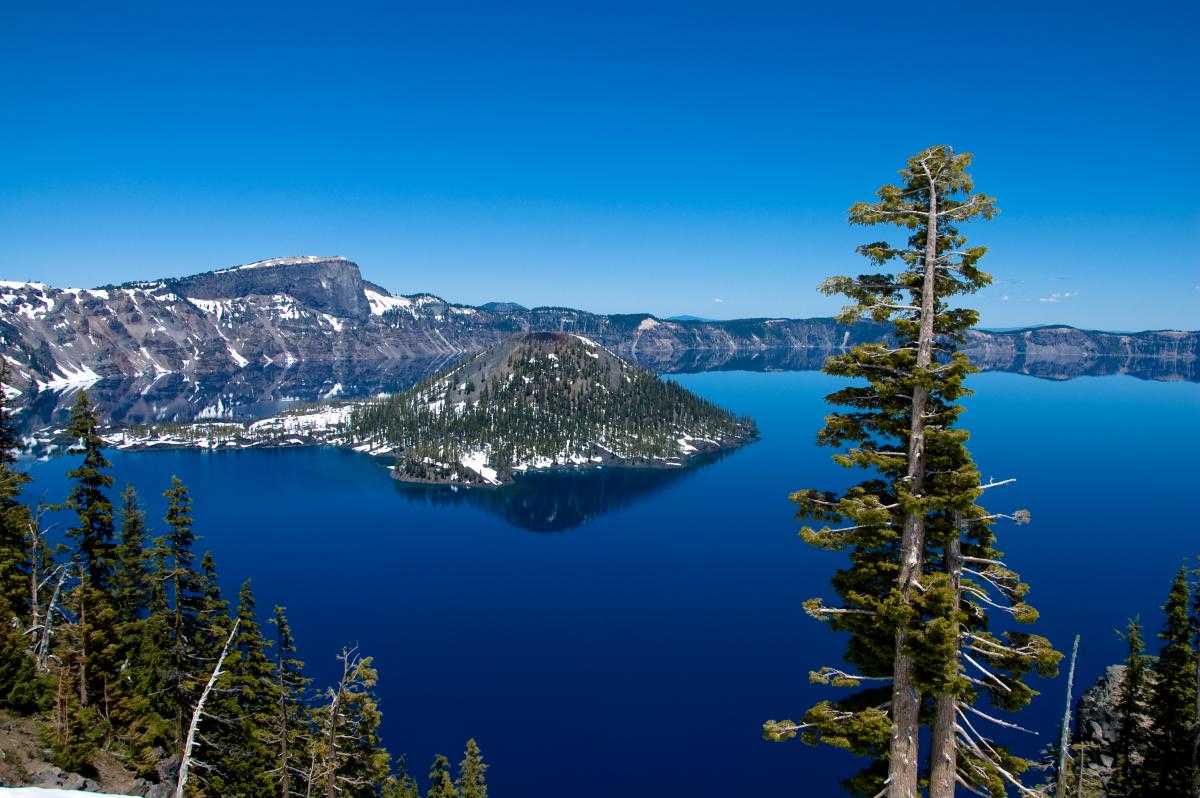
Climate
Crater lake is situated at high elevation and the climate is subalpine. Mild and dry weather coats the summer season, while the winters are cold with average snowfalls of 488 inches (12.40 m) per year. The snow cover remains on the mountain surface until July, thus making it possible for glaciers to form. On 28th of February 1971, the heaviest snowfall was recorded; it was able to accumulate 37.0 inches (94.0 cm) of snow. Frosty surface is feasible even during the summer. Crater lake could have freezing temperatures from August until July.
Sadly, the area remembers the driest year when Crater Lake National Park got the insufficient 68 % of its average snowfall. The area becomes drier than normal, and this shocking tendency provokes initiatives to preserve and reduce the water consumption over the future years.
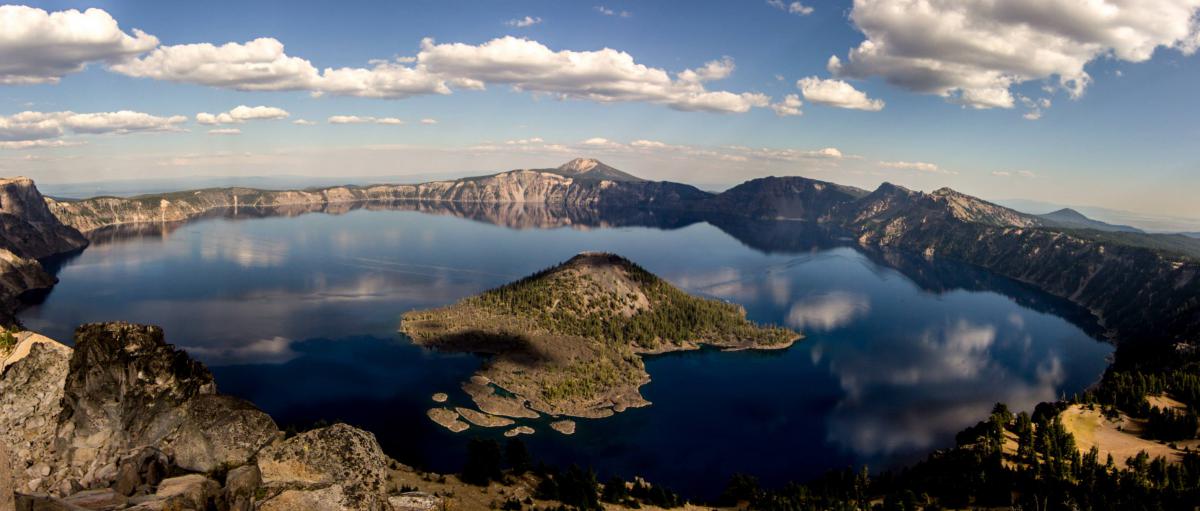
For more info on other magnificent lakes click here
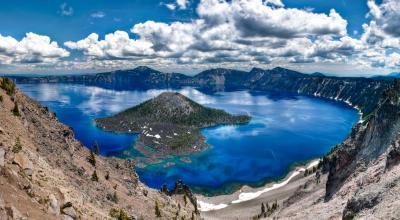
Leave a Reply